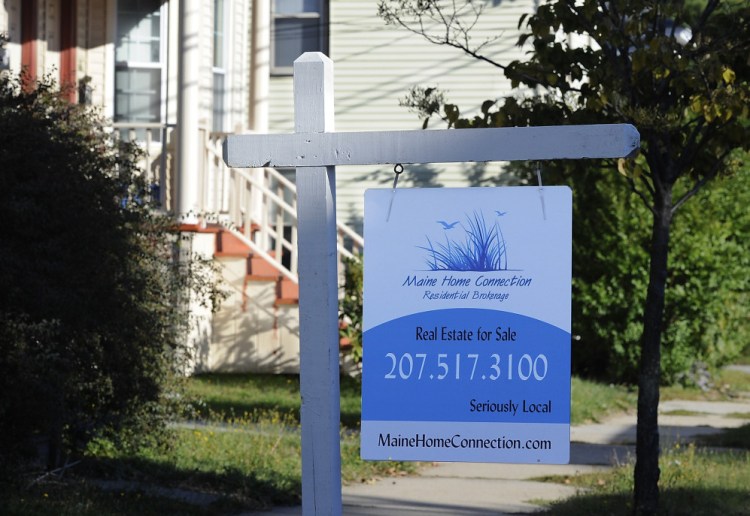Maine homebuyers, consider yourselves warned: Recent changes in the rules for mortgage lenders are expected to significantly extend the time it takes to close on a typical home purchase, from 45 days to at least 60 days.
The changes stem from new federal rules that are designed to protect homebuyers who finance their purchases from misunderstanding the terms of their loans.
But a key provision that requires lenders to generate a new disclosure document every time there is a change in the terms of a sale agreement, followed by a three-day waiting period for the buyer to review the new agreement, could push back the closing date by at least a week each time a change is made, lenders and real estate agents said.
They said the new rules will force buyers, sellers, title agents, real estate agents and lenders to work together effectively to keep the closing process from dragging out.
“Buyers and real estate agents are going to have to be expeditious and get everything in to the lender as soon as possible,” said Ed Gardner, president-elect of the Maine Association of Realtors.
All mortgage applications received after Oct. 2 are subject to the new rules, which combine two previous sets of rules and add some new requirements.
Under the Dodd-Frank Wall Street Reform and Consumer Protection Act passed in 2010, the newly formed Consumer Financial Protection Bureau was tasked with integrating mortgage loan disclosures mandated by two previous laws: the Truth in Lending Act, or TILA, and the Real Estate Settlement Procedures Act, or RESPA. Together, the new rule set is known as TILA-RESPA.
TILA-RESPA does away with four disclosure forms familiar to homebuyers: the good faith estimate, or GFE; the initial and final truth-in-lending disclosures, or TILs; and the HUD-1 settlement statement, used to itemize services and fees charged to the borrower by the mortgage lender or broker.
Those forms will be replaced by two new ones, known as the loan estimate and the closing disclosure.
The new rules require lenders to provide prospective borrowers with a loan estimate within three business days after they file a loan application. Unlike the GFE and initial TIL forms, the loan estimate is highly standardized and looks the same no matter which lender generates it. The form is designed to make it easier for homebuyers to compare the total cost of loans from competing banks, including interest rates, insurance, fees and monthly payments.
“In theory, this is supposed to provide the consumer with a clarity that they supposedly didn’t have before,” said Joe Ferris, vice president of mortgage lending at Androscoggin Bank.
After the buyer chooses a lender, there are a number of steps that must be taken before the home purchase can be completed. They typically include home inspections, negotiation of home repairs, appraisal, loan approval and verification that the property is free of any liens.
Under TILA-RESPA, the final step before closing is the issuance of a closing disclosure, which replaces the final TIL and HUD-1 documents and combines them into one. It must include all of the actual terms and costs of the purchase transaction.
This is where a key difference between the new and old systems comes into play, said Gardner, broker and owner of Ocean Gate Realty LLC in Portland. TILA-RESPA requires that lenders provide buyers with their closing disclosures no fewer than three business days before closing. For instance, if you received your closing disclosure document on a Friday, then you would not be allowed to close on the home purchase until the following Wednesday. It’s a sea change from the previous, decades-old system in which last-minute changes to the transaction were commonplace, Gardner said.
For example, buyers and sellers typically take a measurement of the amount of heating oil remaining in the tank no sooner than a day before the purchase and add the fuel cost to the sale price, he said. Now, the amount of remaining fuel will have to be estimated in advance.
Realistically, for the lender to produce a closing disclosure, all of the transaction’s details will need to have been finalized a few days beforehand, said Bruce Ocko, director of mortgage banking at Bangor Savings Bank. And if any significant change to the transaction is negotiated after the disclosure is issued, the parties must go back to the lender with the new information, get another disclosure, and then wait an additional three business days. That’s a total of seven to 10 days’ additional wait for any significant change, he said.
Still, Ocko believes the three-day rule is a good one.
“It gives people time to think it through,” he said. “At the end of the day, I think it’s a good thing.”
Gardner agreed that the new rules will help homebuyers. Still, he said they are certain to extend the typical amount of time it takes to close on a home purchase. No one will know exactly how long the typical closing will take until next month, when the first purchases made under TILA-RESPA approach their closing dates, Gardner said.
“If they’re financing their home, they’re going to have to give it more time,” he said. “You want to give it at least 60 days.”
Banks, real estate agencies, title companies and others have been preparing for months for TILA-RESPA, they said, installing new software and training employees in the new procedures. Ferris, the Androscoggin Bank vice president, said the biggest challenge has been implementing the new system while continuing to follow the previous rules for loan applications signed before the Oct. 3 transition date.
“It’s kind of like driving down the highway and changing the tire without losing speed,” he said.
Send questions/comments to the editors.





Success. Please wait for the page to reload. If the page does not reload within 5 seconds, please refresh the page.
Enter your email and password to access comments.
Hi, to comment on stories you must . This profile is in addition to your subscription and website login.
Already have a commenting profile? .
Invalid username/password.
Please check your email to confirm and complete your registration.
Only subscribers are eligible to post comments. Please subscribe or login first for digital access. Here’s why.
Use the form below to reset your password. When you've submitted your account email, we will send an email with a reset code.